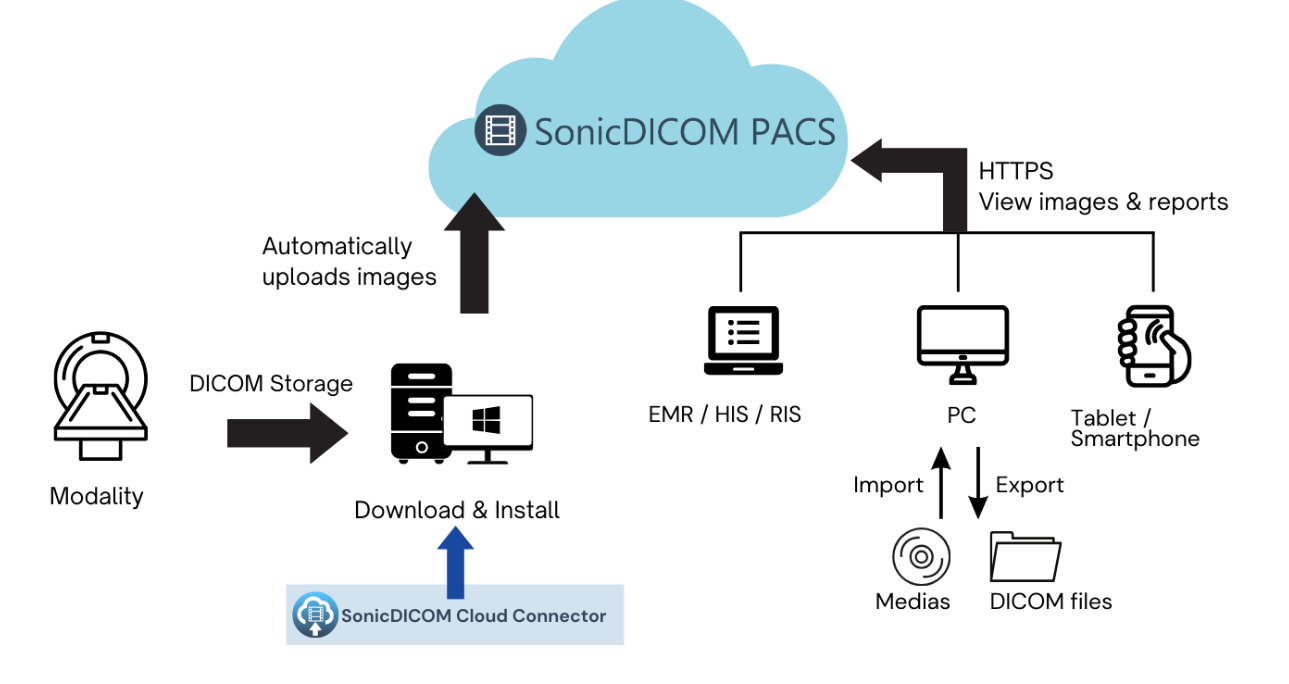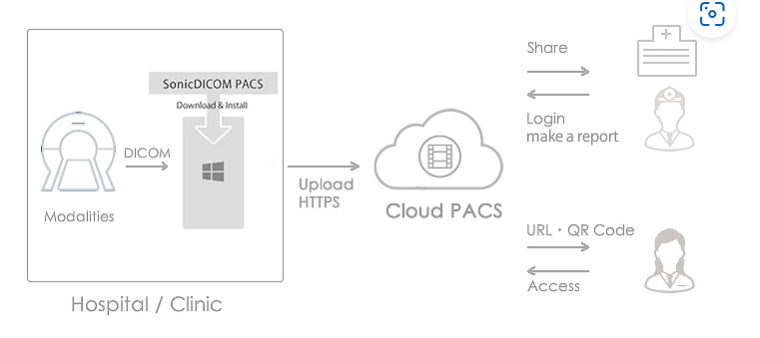Medical organizations are dealing with an increasing volume of data. This data includes patient records, medical images, and treatment plans. Added to this is the need to improve data accessibility, collaboration between centres and the improvement of efficiency in medical care Shah, Varun & Konda, Sreedhar (2022). Cloud platforms provide solutions to these challenges. From the storage of this immense amount of data to tools to facilitate its sharing or accessibility.
One platform that stands out in this digital transformation is SonicDICOM.
What is SonicDICOM?
SonicDICOM was created in 2003 by Fujidenolo Solutions Co. as a medical-use system based on JPEG images. The data center was not established until 2008, with the aim of being able to offer a cloud service to its customers.
SonicDICOM is a web-based medical imaging platform for storage, visualization and sharing, offering cloud environments SonicDICOM, DICOM Viewer & DICOM Server (2024). It allows you to manage and share DICOM format diagnostic images (such as X-rays, MRIs, CT scans, etc) in order to improve DICOM flows in hospitals Rybak, Strzecha, & Krakós (2022).

Below are some of the top SonicDICOM offerings:
1. Storage:
SonicDICOM provides secure cloud storage for medical images. It offers from 100GB to 2TB of storage. The platform also ensures that as data volumes increase, storage capacity can be easily adjusted.
2. Accessibility:
Medical professionals can access data from anywhere. It also offers simultaneous accessibility. This allows doctors to review patient images and make diagnoses without being tied to a specific physical storage location or device. It also offers the possibility to set permission controls to make data restricted to some specific users.
3. Collaboration and Real-Time Sharing:
SonicDICOM enables real-time sharing and collaboration between healthcare professionals via links, making it easily to access from anywhere. This feature improves communication and interoperability.

4. Security:
SonicDICOM complies with strict healthcare regulations to ensure all patient data is stored and transferred securely. It uses HTTPS protocol to ensure a secure data access. The platform uses advanced encryption techniques and provides role-based access control, ensuring that only authorized staff can access confidential patient information.
References
[1] Shah, Varun & Konda, Sreedhar. (2022). Cloud Computing in Healthcare: Opportunities, Risks, and Compliance Introduction. doi:10.5281/zenodo.10779522
[2] SonicDICOM, DICOM Viewer & DICOM Server. (December 2024). https://sonicdicom.com/
[3] Rybak, G., Strzecha, K., & Krakós, M. (February 2022). A New Digital Platform for Collecting Measurement Data from the Novel Imaging Sensors in Urology. Sensors, 22(4), 1539. doi:10.3390/s22041539